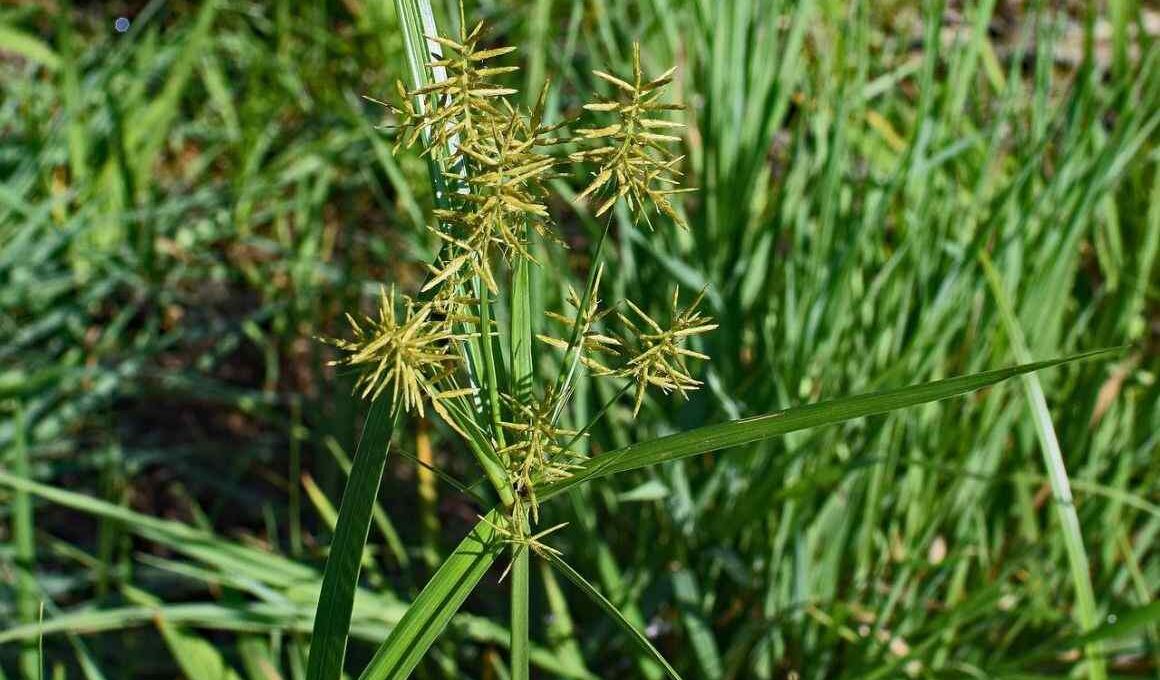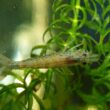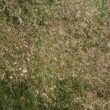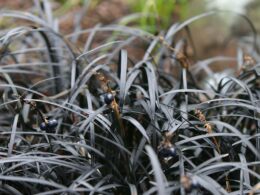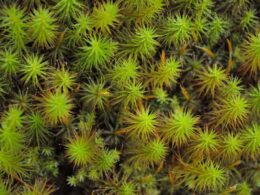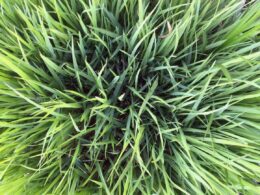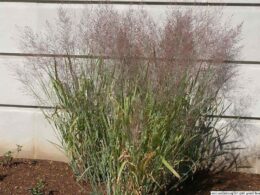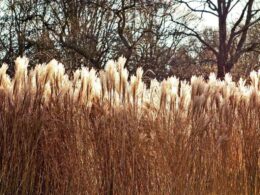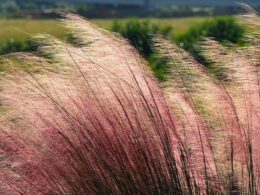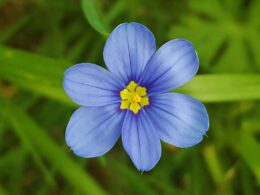What Is Nutgrass (Nutsedge)?
Nutgrass (Cyperus rotundus) or Nutsedge is one of the most common weeds found in lawns and gardens. It is a perennial grass-like weed that emerges from tubers, rhizomes, and seeds. Nutgrass can easily be identified by its triangular stems, light green leaves and reddish-brown flowers that grow in clusters on tall seed stalks.
Nut Grass Apperance
Nut grass, also known as nutsedge or Cyperus rotundus, is a perennial weed that is often found in gardens and lawns. It has a distinctive triangular-shaped stem and can grow up to 4.5 feet tall. Nutgrass, or nutsedge, is not a grass. Its leaves are glossy and linear. In contrast to true grasses, nutgrass has solid stems and its leaves are arranged in groups of three at each node. Yellow nutsedge can be differentiated from purple nutsedge by its shorter leaves.
How to Identify Nutgrass?
You’ll notice nutgrass when you see a clump in your lawn during late spring and early summer. These clumps will often be yellowish green in color, but may turn almost purple on some types of nutgrass. If you look closely at each stem in the clump, you’ll see that they’re all coming from one point underground, where the nut (tuber) is located.
Where Does Nut Grass Grow?
Nutgrass is a perennial weed that thrives in warm, moist areas and can be found both in tropical and temperate regions. It is most prevalent in the southern United States and can be found throughout the country. It grows well in cultivated fields and can be found in landscape beds and other ornamental plantings.
Negative Effects of Nutsedge on Lawn Grass
Nutsedge is a plant that is notorious for wreaking havoc on lawns and gardens. This weed is particularly hardy, able to thrive even in dry, nutrient-poor soil. In addition, it spreads quickly, creating huge mats of tightly-compacted grasses that exclude other plants from growing. The presence of nutsedge can also cause major problems for your overall lawn health by depleting the available moisture and nutrients in the soil.
Resistance to Herbicides
Most importantly, nut grass may develop resistance to herbicides over time, making it difficult or impossible to fully eradicate the nutlets. This is why they’re considered one of the most noxious weeds in the world. If you are dealing with an infestation of nut sedge in your garden or yard, it is best to take swift action to eliminate this invasive species. With diligence and persistence, you can restore your lawn to its former beauty and vibrancy.
How Does Nutsedge Spread?
This aggressive plant reproduces both through seed and via its creeping rhizomes, allowing it to rapidly spread across the landscape and take over large areas.
Reproduction Via Seed
The tiny spikelets on its blades are responsible for spreading the plant further. These spikelets become detached from the parent plant easily, traveling with the wind or water to new locations where they can establish roots and begin growing new plants. Additionally, these spikelets are also able to self-pollinate, which allows them to reproduce even in the absence of other nutgrasses nearby. However, the most common way of reproduction is via rhizomes.
Reproduction Via Rhizomes
One common method is through its extensive network of underground roots, known as rhizomes, which allow it to travel quickly over large areas of land. The rhizomes can grow up to several feet long and produce new shoots and leaves at their nodes, or joints. Nut grass is difficult to control because even small pieces of rhizome can produce new plants. Given these methods of propagation, it’s clear that nutgrass poses a serious threat to landscapes if not managed properly.
How to Get Rid of Nutsedge? Cyperus Rotundus Weed Control
There are a few different strategies that can be used to get rid of nutsedge, or nutgrass. One option is to use herbicides and other chemical products; however, these can be harsh on surrounding plants and may have negative long-term effects on the soil. Another option is to dig out the weeds manually; however, this can be time-consuming and labor-intensive, as well as potentially damaging to the plants and roots you wish to preserve.
Other Methods
An easier and more effective approach is simply to outcompete the weeds by putting in extra effort in your own garden. For example, rotating crops and planting thick, fast-growing ground covers like clover will help to crowd out nutsedge wherever it appears. In addition, using mulch will help suppress new growth from popping up from the underground tubers.
How to Prevent Nut Grass From Coming Back?
Nut grass is a troublesome weed that can be difficult to get rid of. Although pulling the plant up by its roots can often do the trick, it can be tricky to locate the long, buried root system. To prevent nut grass from coming back, you need to kill the entire plant, preventing any new growth from emerging.
Remove All the Nuts (Tubers) Completely
The first step in preventing nut grass from coming back is to remove all existing nuts completely. This involves uprooting the plants and removing their roots, as well as removing any impacted soil. You will also need to be thorough in your removal process, making sure that every last trace of nut grass is taken out so that it cannot regrow.
Replant With a New Crop
You can replant with a new crop of healthy grass seed or sod. It’s important to use high-quality seed or sod here, since low-quality plants may still be susceptible to damage from nut grass should anything go wrong in your prevention efforts. As an additional precaution, it’s a good idea to lay down several layers of protective mulch around any newly planted seeds or sods to further protect against nut grass growth.
Monitor the Lawn
In order to ensure that your efforts at prevention are successful, it is important to monitor for any other types of invasive weeds as well. By taking steps now to make sure these unwanted plants don’t come back later on, you can keep your lawn healthy and strong for years to come





